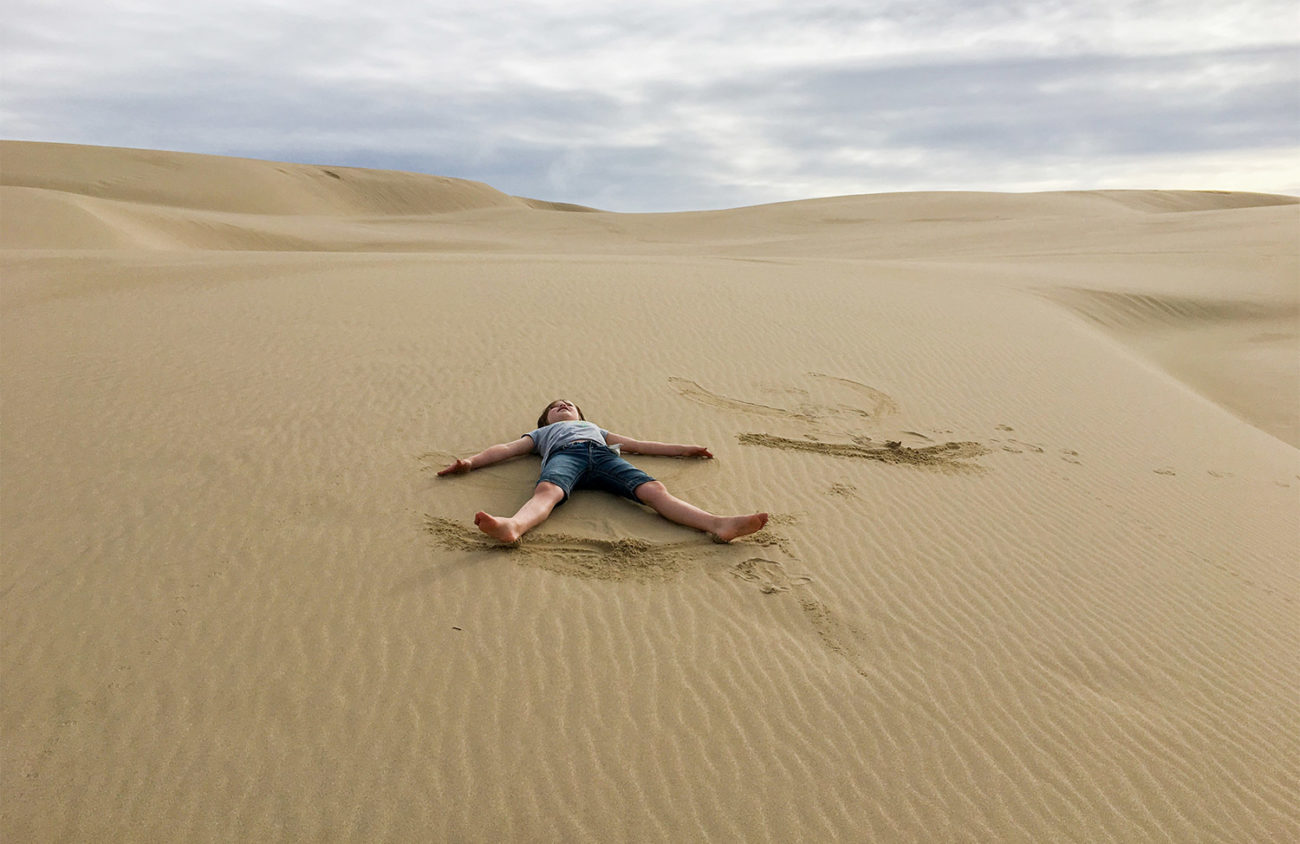Oregon’s central coast — from Florence to Coos Bay — was once a vast expanse of moving sand 40 miles long and up to three miles wide in places. Oregon’s dunes are a unique ecosystem, one of the largest of its kind, that formed more than 100,000 years ago. Fascinating, right?
Oregon’s dunes also happen to be one of the best places to get outside to play on the coast. They can be enjoyed in pretty much any season and type of weather, and while parts of the dunes are a favored playground for off-road vehicles, others are quiet, lovely and nearly deserted.
Fifty years ago, back in 1972, 32,000 acres were designated as the Oregon Dunes National Recreation Area (ODNRA), managed by the Siuslaw National Forest. But long before that, humans had begun to change this shifting landscape — introducing European beach grass that would stabilize the dunes to hold the shifting sands at bay from Highway 101 and new towns building up along the coast.
Like the century of extensive logging in Oregon’s coastal forests, taming the shifting sands of the dunes has had major consequences. The imported beach grass held the sand in place as desired, but that meant major shifts in the ecosystem — less moving sand meant more stable dunes and shrubs (both native and invasive, like Scot’s broom) and trees taking root where they weren’t before. Habitat for plants and animals that depended on open sand shrunk, and habitat for shrub-loving critters like the rare coastal marten (a member of the weasel family) expanded.
Recognizing the importance of the dunes ecosystem, collaborative efforts by the U.S. Forest Service, off-road vehicle users, conservationists and Tribes are underway to both preserve the remaining open sand areas and restore the vanishing dunes ecosystem by removing invasive plants and stabilized dunes. (You can help as a weed-pulling volunteer, which runs year-round — check out SaveOregonDunes.org for more.)
Aside from a home for wildlife, use of the dunes is today focused on recreation, and it is a destination that helps drive the local economy. As such, there are dozens of places to stop, take a walk, camp, watch wildlife, hop on a sand buggy or launch a boat in the ODNRA along Hwy 101.
Motorized vehicles are allowed (and are popular) in some designated areas of the dunes. I personally like to avoid these areas for more peace and quiet. One of my favorite options is the Tahkenitch Dunes Day Use Area about 14 miles south of Florence, where you can hike across dunes, along a meandering creek, and through young forest where you really get a feel for the changes occuring due to invasive plants.
(Keep in mind that nearly all of these coastal recreation areas require a Northwest Forest Pass, day pass, or state park permit, which cost $30 a year or $5 a day.)
My favorite place in the Oregon dunes, though, is the John Dellenback Dunes area, where you can experience the once-vast dunes ecosystem; it’s the largest expanse of open sand left in the ODNRA that is closed to motorized vehicles and bikes. Native plants like lupine, sand verbena and bunch grasses persist here, as do unique butterflies, beetles, frogs and other wildlife that depend on the moving sand environment.
The trail starts just south of the Eel Creek Campground and the community of Lakeside, on the west side of Hwy 101 about 10 miles south of Reedsport. It climbs a sandy path through a shore pine and spruce forest before reaching open sand and tall dunes. Look for wooden posts leading towards the ocean — but don’t be afraid to wander and explore the fascinating sand landscape on your way.
In early spring, the water table can be quite high, and small ponds form in the nooks and crannies of the rolling sand hills. (Stay a safe distance from the edge of these wet areas, as the wet sand can turn to dangerous quicksand in the blink of an eye.)
Got kids? They’ll love running up and down the dunes and exploring tracks in the sand even more than you do.
It’s about 1.5 miles to the ocean, and in the spring, the low-lying forest between the dunes and beach can be flooded. No matter: If you can’t get all the way to the beach, just make your own loop back to where you came from, keeping the prominent tree islands and inland landscape features in sight so you don’t get lost.
If you do make it to the beach, be aware of posted signs requesting that you (and your dogs) stay off the dry sand between the dunes and the beach. The seasonal closure (March 15 through Sept. 15) is to protect nesting snowy plovers — a cute little shore bird that nests in dry sand and has not fared well in the altered dunes landscape. Fortunately, restoration efforts and use restrictions have helped their population stabilize. Please obey posted signage.
For more information visit FS.usda.gov/main/siuslaw/home click “recreation” and scroll down to the Oregon dunes..
Chandra LeGue of Eugene is the author of the book Oregon’s Ancient Forests: A hiking guide and is the Western Oregon field coordinator for Oregon Wild where she advocates for the protection and restoration of Oregon’s forests and wild places.
